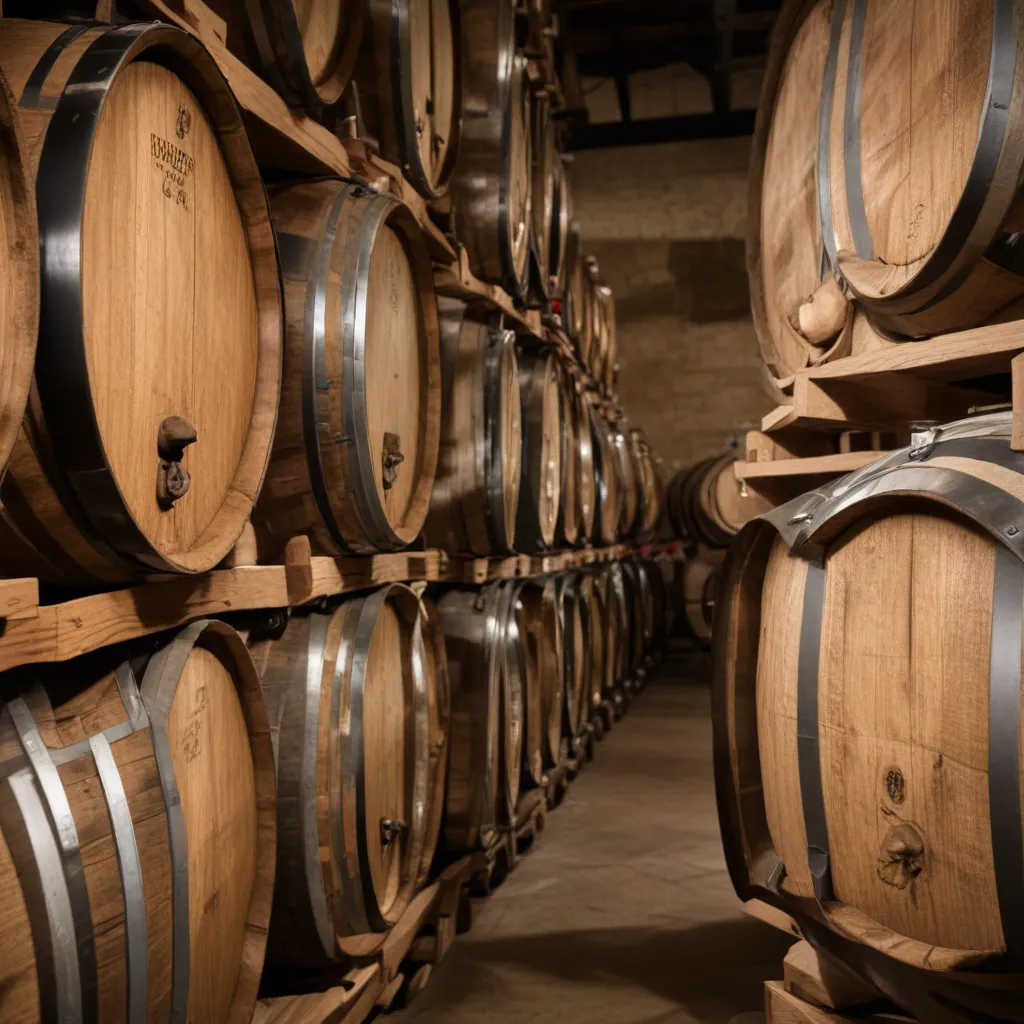
The art of winemaking is a harmonious dance between science and tradition, where each step unveils new layers of complexity and character. At the heart of this captivating process lies the enchanting realm of oak barrel aging – a journey through time, taste, and terroir that has captivated vintners and wine enthusiasts alike.
History of Oak Barrel Aging
Origins of Oak Barrel Aging in Winemaking
Oak barrel aging has been a cornerstone of winemaking for centuries, tracing its roots back to the ancient civilizations of Greece and Rome. As early as the 1st century AD, winemakers recognized the transformative power of oak, using it to store, transport, and subtly influence the flavors of their cherished wines.
Evolution of Oak Barrel Aging Techniques
Over the millennia, the art of oak barrel aging has evolved, with each era and region contributing unique innovations. From the tight-grained French oak barrels of Bordeaux to the bold, vanilla-tinged American oak casks of the New World, the selection of barrel type has become a defining characteristic in a wine’s signature profile.
Significance of Oak Barrel Aging in Wine History
The impact of oak barrel aging on the wine industry cannot be overstated. This revered practice has not only shaped the flavors and aromas of countless iconic wines but has also been a driving force behind the diversification of wine styles, the refinement of winemaking techniques, and the very evolution of wine culture itself.
Chemical Composition of Oak Barrels
Oak Species and Their Characteristics
At the core of oak barrel aging lies the unique chemical composition of the oak itself. While numerous oak species have been used in winemaking, the most prominent are the tight-grained French oak (Quercus petraea) and the more open-grained American oak (Quercus alba). Each variety imparts distinct aromatic and flavor compounds, lending wines their own distinctive personality.
Toasting and Charring Effects on Oak
The oak’s chemical profile can be further enhanced through the process of toasting and charring the barrel. Controlled exposure to heat alters the oak’s tannins, sugars, and aromatic compounds, unlocking a rich tapestry of flavors – from vanilla and caramel to subtle smoke and spice.
Interaction of Oak Compounds with Wine
As the wine interacts with the oak’s intricate chemical matrix, a captivating dance unfolds. Tannins, vanillins, lactones, and a host of other compounds leach into the wine, contributing to its overall structure, mouthfeel, and flavor complexity.
Maturation Processes in Oak Barrels
Oxidation and Oxygenation in Oak Aging
One of the key benefits of oak barrel aging is the controlled introduction of oxygen, which facilitates a gradual maturation process. This gentle oxygenation helps to soften tannins, integrate flavors, and lend the wine a more harmonious, well-rounded profile.
Extraction of Oak Tannins and Flavors
As the wine rests in the oak barrel, it slowly extracts a tapestry of tannins, vanillins, and other aromatic compounds, each contributing to the wine’s evolving character. The duration and intensity of this extraction can be carefully managed by the vintner to achieve the desired sensory profile.
Microbial Activity in Oak Barrel Environments
The porous nature of oak barrels also provides a hospitable environment for beneficial microorganisms, such as Brettanomyces and Lactobacillus. These microbes can impart unique flavors and aromas, adding an extra layer of complexity to the wine’s maturation journey.
Sensory Profiles of Oak-Aged Wines
Oak-Derived Aromas and Flavors
The influence of oak barrel aging on a wine’s sensory profile is nothing short of transformative. Depending on the oak’s origin, toast level, and the duration of aging, a wine can exhibit a wide spectrum of aromas and flavors, including vanilla, toasted nuts, caramel, dark chocolate, and even a hint of coconut or smoke.
Textural Changes from Oak Barrel Aging
In addition to its impact on aroma and flavor, oak barrel aging also plays a crucial role in shaping a wine’s mouthfeel. The tannins extracted from the oak can lend a smooth, velvety texture, while the oak-derived polysaccharides can contribute to a fuller, more creamy mouthfeel.
Oak Influence on Wine Complexity
As the wine interacts with the oak, it undergoes a profound transformation, evolving from a relatively simple, youthful expression into a multilayered, nuanced masterpiece. This heightened complexity is a hallmark of oak-aged wines, captivating the senses and inviting deeper exploration.
Styles of Oak-Aged Wines
Old World vs. New World Oak Aging Approaches
The influence of oak barrel aging on wine styles is not uniform across the globe. While the Old World regions of Europe, such as Bordeaux and Tuscany, tend to favor a more subtle, integrated oak influence, the New World producers often embrace a bolder, more pronounced oak character.
Varietal Suitability for Oak Barrel Aging
Not all grape varieties are equally suited to oak barrel aging. Robust, tannic reds like Cabernet Sauvignon, Merlot, and Tempranillo thrive in an oak-aged environment, while delicate, aromatic whites like Chardonnay and Riesling require a more delicate touch to preserve their inherent freshness.
Blending Oak-Aged Wines with Unoaked Wines
Many winemakers employ a strategic blending approach, combining oak-aged wines with their unoaked counterparts. This technique allows them to strike a harmonious balance, harnessing the depth and complexity of the oak-aged components while maintaining the vibrant, fruit-forward character of the unoaked wines.
As we delve into the captivating world of oak barrel aging, we discover a realm where time-honored traditions and cutting-edge science converge, creating an ever-evolving symphony of flavors and aromas. From the rich, velvety Cabernet Sauvignons of Napa Valley to the elegant, oak-kissed Chardonnays of Burgundy, the influence of this revered practice is woven into the very fabric of the global wine landscape.
Unlock the secrets of oak barrel aging, and you’ll uncover a world of Wine Garden Inn where the boundaries between art and science blur, where the essence of the vine and the nuance of the barrel meld into a harmonious whole, and where every sip becomes a journey of discovery.
